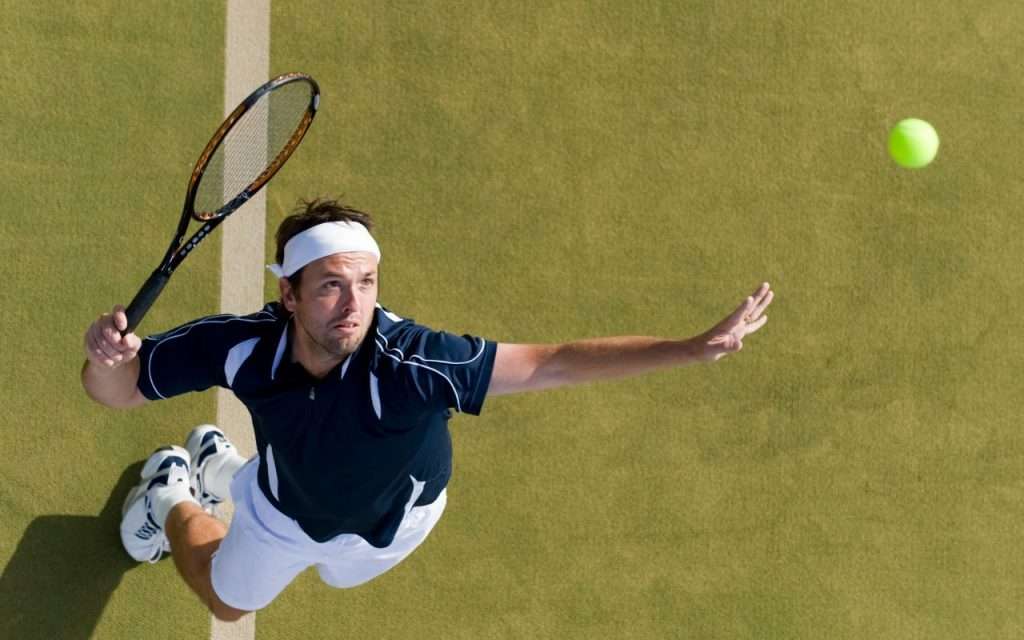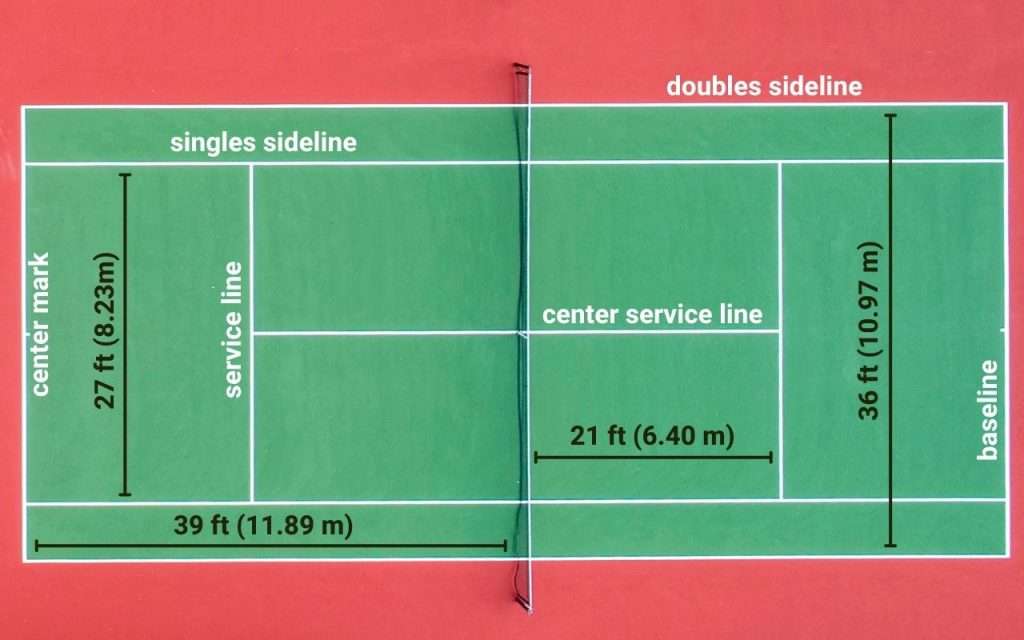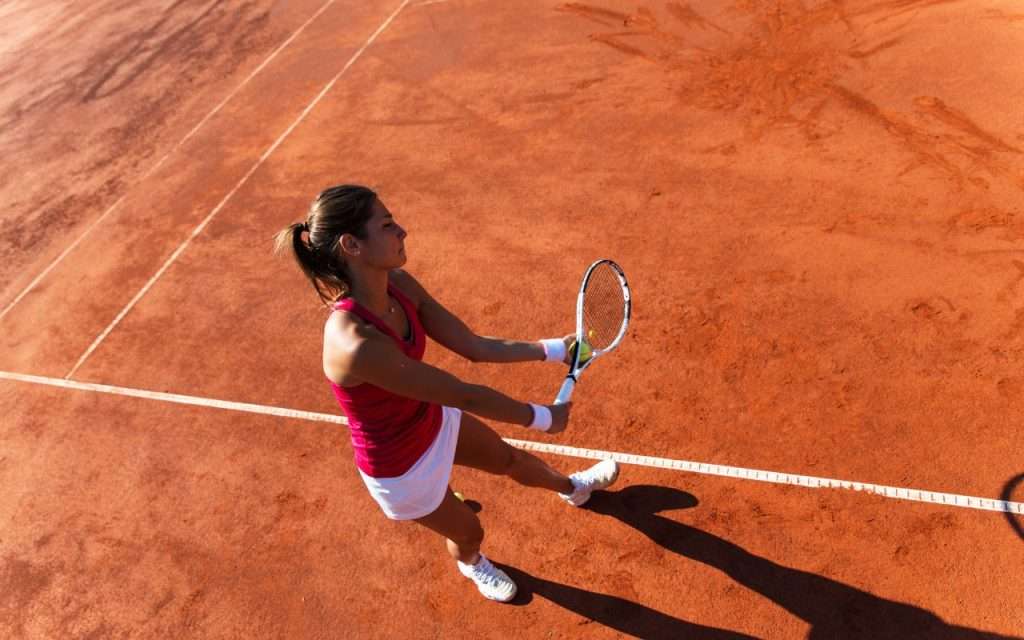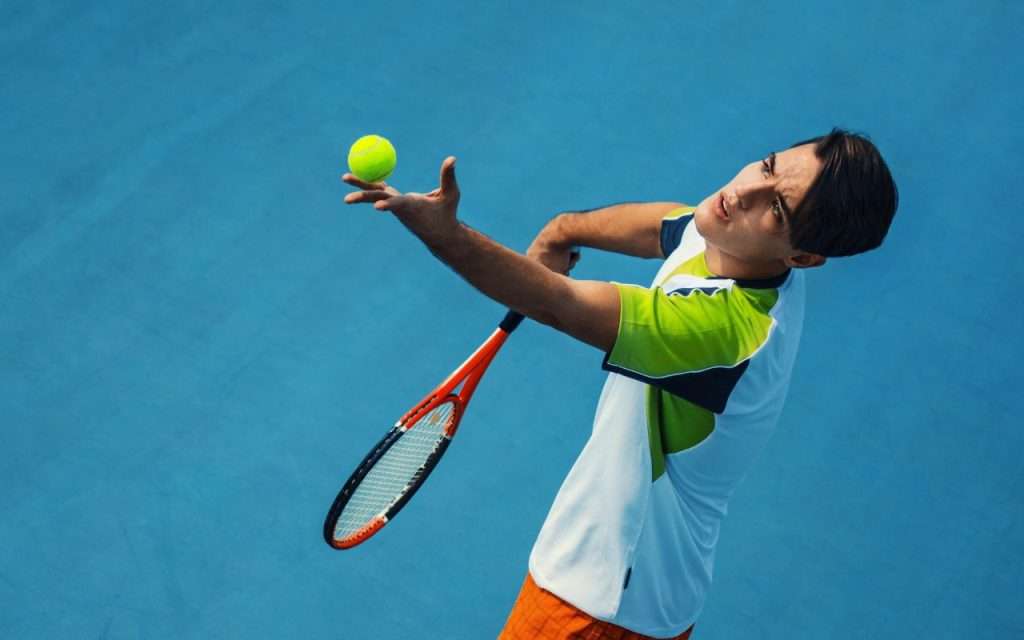
Figuring out tennis serve rules can feel intimidating for newer players. Because it’s a fundamental aspect of tennis. This guide outlines the essential tennis serve rules you need to know.
Don’t let serving mistakes cost you points in a tennis match. Brush up on the rules with this comprehensive guide to tennis serve rules.
Scoring Your First Point
On the first point of the game, your serve must go over the net and into the receiver’s right service court. That side of the court is also referred to as duece.
If your first serve does not make it across the net and into the service court, this is called a “fault.” You have one more chance to serve the ball correctly: so make it count.
Avoiding A Double Fault
When a player misses the second serve, this is called a “double fault,” and their opponent wins the point. That would start the game at Love-15 or 15-Love.
Key Point: The right side is called the deuce court because, on a deuce score, you serve the ball there. The same applies to the left, or “ad,” court.
Switching Sides
One more essential rule to keep note of is that once you have served one game in a set, you switch ends of the court, meaning you go to the side your opponent was on and vice versa. This will also happen following the third, fifth, seventh, and after every odd-numbered game.
Tennis Serve Rules Singles
When playing singles, your serve must go diagonally into the service box across the court. This is the same for doubles, except in a singles game, the singles sideline goes into effect.
Here is what that looks like:

Tennis Serve Rules Doubles
Now, you’ll also need to hit the ball into the service box across the court for doubles. However, the wider sideline goes into effect with this type of serve/game, allowing for a larger margin of error.
It’s also worth noting that you and your teammate must decide who serves each time when playing doubles.
Tennis Toss Rules
Toss rules for a serve are pretty straightforward. You want to hold the ball between your fingertips and palm. You’ll also need to ensure your toss doesn’t result in the ball hitting the court before you can hit it with your racket.
The Basics Of A Tennis Serve
When hitting a serve in tennis, players have to be accurate yet powerful to officially start the game. As you serve the ball, you toss it in the air, making contact with your racket.
The ball must land in the opponent’s court, kicking off the game. This is, hands down, the most crucial stroke in tennis: so you have to master it.
When Do You Serve In Tennis?
Typically, people playing tennis will begin their game with a coin toss, followed by the winner choosing who serves first versus who receives. Your serve is the first (and most important) part of the game.
Where Do You Serve In Tennis?
Location-wise, you need to serve from behind the baseline, remaining stationary: the singles sideline for singles and the doubles sideline for doubles. From there, players will begin their game with a serve, diagonally into the service box across the court.
The nice thing about the serve is you have two chances to hit one to your opponent. The serve must be struck before the ball bounces, so keep that in mind.
Tips for Tennis Serve
Grip

The grip a player uses for their serve is incredibly important. You should generally use the Continental grip for serve, which allows your forearm and wrist to naturally pronate (or snap) through the ball.
Set Up

The next thing to focus on is your serve’s set-up. As you approach the baseline, place your foot at around a 45-degree angle with the baseline. Have your shoulders and hips closed almost perpendicular to the net.
Ball Toss

You also want to focus on how you toss the ball before hitting your serve. To begin, you want to have the ball in between your fingertips and the palm of your hand.
From there, you should be in the same plane where you would release to throw a ball out in front of your body, to the right if you serve right-handed.
How To Serve The Ball
- Find your position (back foot parallel to the baseline)
- Prepare your grip (we recommend using the Continental)
- Position your racket (point your tennis racket forward to the target)
- Bring the racket back (into a throwing position, angling your body away from the court)
- Toss the ball (between your fingertips and palm)
- Swing at the ball with your racket
- Follow through (across your body, then recover quickly for the next shot)
FAQs
What Is A ‘Let’ In Tennis?
If you serve a ball into the opponent’s side of the court, but it first hits the net: this is a “let.” If this happens, you can take that serve again.
If the ball hits the net again, that serve results in a fault. The same applies to one that hits the post.
What Are Underhand Serves?
Although considered unconventional, you can serve using an underhand technique. Generally, this is when a more experienced tennis player hits the ball in an upward motion.
The underhand serve is fine as long as the ball doesn’t hit the court/bounce before you can come in contact with it.
What About Foot Faults? What Does This Mean?
When serving, your foot may touch the baseline or the imaginary extension of the center mark. When this happens, you receive a foot fault.
Many new tennis players run into this problem while serving, so be extra cautious about where your feet are before tossing and hitting your serve.
What’s Next
In this post, we described the basic rules of serving and other tips for a successful start to your game.
Remember to always stand behind the baseline when serving and follow the sideline rules for singles and doubles. You’ve got two chances to score your first point; good luck!
